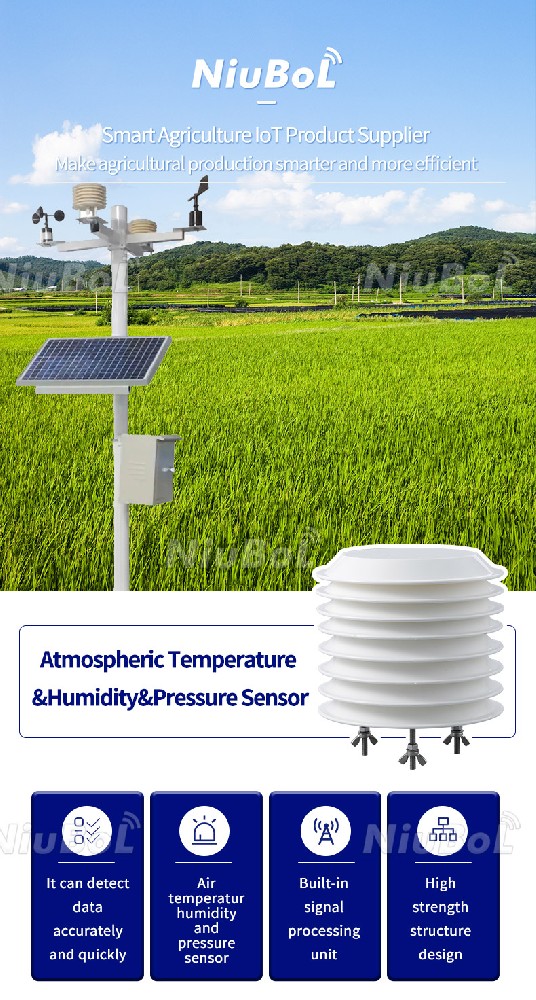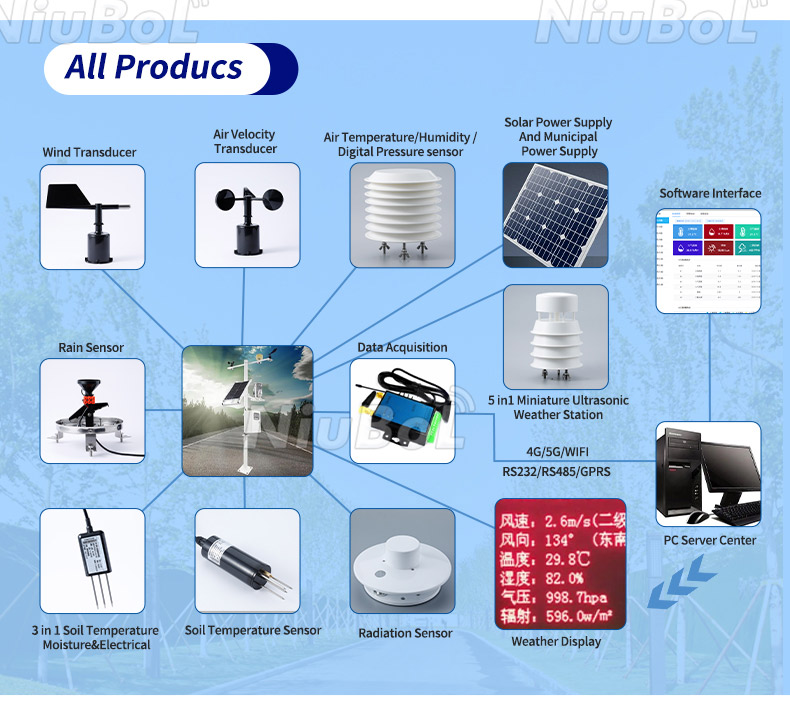

— Blogs —
—Products—
 Consumer hotline +8618073152920
Consumer hotline +8618073152920 WhatsApp:+8615367865107
Address:Room 102, District D, Houhu Industrial Park, Yuelu District, Changsha City, Hunan Province, China
Product knowledge
Time:2022-06-08 21:15:06 Popularity:1330
In recent years, with the development of the agricultural planting industry, there are more and more agricultural weather stations in agricultural planting. The main role of agricultural weather stations is to monitor the monitoring of meteorological elements in agricultural planting, and through the accurate monitoring of meteorological elements in agricultural planting, to provide data support for agricultural planting that can be referred to.

Agricultural meteorological stations not only conduct meteorological (including soil moisture) observations, but also parallel observations of agricultural organisms in accordance with the norms of agricultural meteorological observations, analyze favorable and unfavorable meteorological conditions for agricultural organisms, and serve local agricultural production; at the same time, they must report observations and reports to higher operational and service departments. According to the tasks assigned to it, the World Meteorological Organization classifies it into four categories, i.e. main agrometeorological stations, general agrometeorological stations, auxiliary agrometeorological stations and special agrometeorological stations, and specifies the staff and instrumentation to be equipped respectively.

The agrometeorological stations are flexible and easy to install, and the installation parts can be set up with the site environment, which varies according to the height difference of vegetation and does not affect the growth of crops. The system uses wireless communication to transmit data, which can be used individually or in a network of multiple stations, and the data is collected, processed and analyzed through the central station software in a unified manner. Agricultural production is closely related to meteorology, where a certain combination of light, heat, water and air is beneficial for a certain production and forms an effective agricultural natural resource.
Taking orchard planting as an example, after installing an agricultural weather station, the data of planting meteorological elements are recorded in real time through the station. When heavy rain comes, rainfall information can be monitored through the weather station, and if too much rain is monitored to be suitable for fruit growth, then staff can be arranged to take countermeasures to address the impact of the orchard! Through the monitoring of these meteorological elements, the yield of crops can be improved after certain measures are taken.
The orchard agricultural weather station can study the spatial and temporal distribution patterns of these agricultural natural resources and agricultural natural disasters by monitoring elements such as wind direction, wind speed, air temperature, relative humidity, atmospheric pressure, rainfall, solar radiation, light quanta, soil temperature, soil humidity, moisture, etc., to serve the zoning and planning of agriculture, the rational layout of crops, the artificial regulation of microclimate and the cultivation management of crops such as orchards The monitoring of soil moisture and other elements of agricultural natural resources and agricultural natural disasters is carried out in a spatial and temporal manner.
Related recommendations
Sensors & Weather Stations Catalog
Agriculture Sensors and Weather Stations Catalog-NiuBoL.pdf
Weather Stations Catalog-NiuBoL.pdf
Related products
 Combined air temperature and relative humidity sensor
Combined air temperature and relative humidity sensor Soil Moisture Temperature sensor for irrigation
Soil Moisture Temperature sensor for irrigation Soil pH sensor RS485 soil Testing instrument soil ph meter for agriculture
Soil pH sensor RS485 soil Testing instrument soil ph meter for agriculture Wind Speed sensor Output Modbus/RS485/Analog/0-5V/4-20mA
Wind Speed sensor Output Modbus/RS485/Analog/0-5V/4-20mA Tipping bucket rain gauge for weather monitoring auto rainfall sensor RS485/Outdoor/stainless steel
Tipping bucket rain gauge for weather monitoring auto rainfall sensor RS485/Outdoor/stainless steel Pyranometer Solar Radiation Sensor 4-20mA/RS485
Pyranometer Solar Radiation Sensor 4-20mA/RS485
Screenshot, WhatsApp to identify the QR code
WhatsApp number:+8615367865107
(Click on WhatsApp to copy and add friends)
